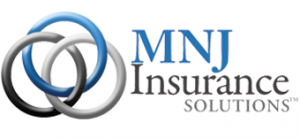
IRS Notice 2015-17: New Guidance for Employer Premium Reimbursement
In the past, many employers have helped employees pay for individual health insurance policies (i.e. through “Employer Payment Plans”) in the offering an employer-sponsored plan. In recent months, the Department of Labor (DOL), Health and Human Services (HHS), and Treasury Departments have released several pieces of guidance addressing these arrangements. According to this guidance, employer payment plans do not comply with several ACA provisions that took effect beginning in 2014. In May 2014 release from the IRS, violations of these rules can result in excess lines of $100 per day, per employee or $36,500 annually under section 4980D of the Internal Revenue Code.
Later, on February 18, 2015, the Internal Revenue Service issued Notice 2015–17. This Notice clarifies that increase in employee compensation does NOT constitute an employer payment plan, as long as the increases are not conditioned on the purchase of individual coverage; provides transitional relief from the excise tax for small employers through June 30, 2015 and to S-corporation healthcare arrangements for 2% shareholder employees; and addresses whether employers may reimburse employees for Medicare or TRICARE premiums for active employees under ACA. The DOL and HHS have reviewed the Notice and agree with the guidance provided.
What is an Employer Payment Plan?
An Employer Payment Plan is an arrangement through which an employer pays, directly or indirectly (i.e. including direct or indirect payments with after-tax dollars), and employee’s premiums for major medical coverage purchased and in the individual market (inside or outside the exchange), and/or Medicare Part B or D premiums. Employer Payment Plans violate one or more of the health insurance reform through the ACA (including the prohibition on annual dollar limits on essential health benefits and the requirement to provide preventive care without cost-sharing) and as such, excise taxes of up to $100 per day per employee would apply under Code Section 4980D. See IRS notice 2013–54 and Agency ACA FAQs XXII. The Notice also describes and clarifies the types of permissible arrangements that can be used for employers to reimburse Medicare Part B or D premiums or TRICARE expenses without running afoul of the health insurance reforms.
Temporary Transition Relief for Small Employers until June 30, 2015
The new Notice acknowledges this rule may be a challenge for smaller employers with 50 or fewer full-time equivalent employees for 2014 to comply with, and therefore, small employers will not be penalized for noncompliant premium payment plans that were in effect during 2014. According to Notice 2015–17, there is a delay in the excise tax penalty for employer some are not considered to be an applicable large employer. Small employers may require more time to implement alternative health coverage. This transition relief is temporary and small employers may be subject to the excise tax after June 30, 2015. In addition to waiving the penalty, the smaller employers will not be required to file the Form 8928 on which non-compliance is expected to be self-reported.
It is important to note, there is no relief for employers with 50 or more full-time equivalent employees, and they were required to begin compiling as of January 1, 2014.
S-Corporation healthcare arrangements for 2% shareholder employees
Under IRS Notice 2008-1, if a S-corporation pays for, or reimburses premiums for individual health insurance coverage during a 2% shareholder, the payment for reimbursement is included in income, and the 2% shareholder may deduct the amount of premiums, provided that all other eligibility criteria for deductibility are satisfied. Notice 2015–17 refers to this as “2% shareholder-employee healthcare arrangement.”
The Notice indicates that the agencies expect to issue additional guidance in the future regarding the application at the health insurance reforms to more than 2% shareholder arrangements. Although not addressed in the Notice, it would seem that similar relief maybe necessary for other self-employed individuals who are allowed to take a section 162(I) deduction for individual market health insurance, such as partners in a partnership. The Notice also indicates that the IRS and Treasury are considering whether additional guidance is needed regarding the federal tax treatment of health coverage provided to more than 2% shareholder employees. Until then, S-corporations and more than 2% shareholders may continue to rely on Notice 2008-1 with regard to tax treatment of these arrangements for all federal income and employment tax purposes.
Reimbursement of Medicare premiums
Notice 2015-17 indicates that certain employer payment plans that reimburse Medicare Part B and/or D premiums will be considered integrated with a group health plan for the purposes of the health insurance reforms, if the following conditions are satisfied:
- The employer offers a group health plan, other than the employer payment plan, that provides minimum value coverage;
- The employee participating in the employer payment plan is actually enrolled in Medicare;
- The employer payment plan is available only to those who are enrolled in Medicare; and
- The employer payment plan limits reimbursement to Medicare Part B or part D premiums and excepted benefits, including Medigap premiums.
Employer should proceed with caution regarding this portion of the notice. While this arrangement may not be in conflict of healthcare reform is, it will violate Medicare Secondary Payer (MSP) rules, unless a small employer (under 20 employees) MSP exception applies.
TRICARE Arrangements
TRICARE is not considered an employer group health plan. As a result, such coverage cannot be integrated with an employer payment plan (such as plan reimbursing individual medical premiums). Notice 2015–17 provides a similar relief for HRA’s that reimbursed expenses incurred by employees covered by TRICARE.
TRICARE arrangements will be considered integrated with a group health plan for the purposes of healthcare reform, providing the following conditions are met:
- The employer offers a group health plan, other than reimbursement arrangement, that provides minimum value;
- The employee participating in the reimbursement arrangement is actually enrolled in TRICARE;
- The reimbursement arrangement is available only to those who are enrolled in TRICARE; and
- The reimbursement arrangement limits reimbursement to cost share under TRICARE and excepted benefits, including TRICARE supplemental arrangement.
Similar to Medicare, TRICARE has strict coordination rules that make this type of arrangement illegal for employers subject to TRICARE coordination.
Call to Action for Employers:
Health Care Reform has made many changes to the insurance industry, and we are here to assist you with ensuring your groups compliance and Employee Benefit needs. With the new, additional guidance from the IRS, we recommend employers to do the following:
- Evaluate your current policy and procedure regarding benefits;
- Small employers that reimburse employees to pay directly for all or part of employee’s premiums for individual health coverage must change this practice and seek other options for group health insurance to avoid costly penalties for non-compliance.
If you have any questions or would like further clarification, MNJ insurance Solutions is here to assist you with your group health insurance needs and compliance.
More Information:
http://www.irs.gov/Affordable-Care-Act/Employer-Health-Care-Arrangements
IRS Notice 2013-54
IRS Notice 2015-17: Guidance on the Application of Code § 4980D to Certain Types of Health Coverage Reimbursement Arrangements
This content is provided for informational purposes only. While we have attempted to provide current, accurate and clearly expressed information, this information is provided “as is” and MNJ Insurance Solutions makes no representations or warranties regarding its accuracy and completeness. The information provided should not be construed as legal or tax advice or as a recommendation of any kind. External users should seek professional advice form their own attorneys and tax and benefit plan advisers with respect to their individual circumstances and needs.






